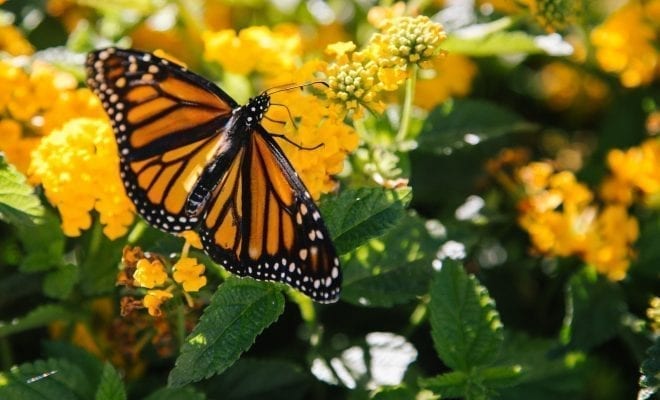
News
The California Monarch Butterfly Population Has Declined 86% in One Year
Known for its stunning and vibrant color, the monarch butterfly is one of the most well-recognized in all of California, and soon, they could be gone if conservation efforts are unsuccessful. Xerces Society, an international nonprofit dedicated to preserving invertebrates and their habitats, reports that the population of Western monarch butterflies has fallen by a staggering 86 % in coastal areas of California.
A blog post on Xerces Society’s website reads: “It’s worse than anyone had anticipated. We are very troubled to observe such an apparently large decline in the population this year.” Xerces also mentions several stressors affecting the western monarch, such as habitat loss, pesticides, and climate change including increased drought severity and frequency. All of these, however,
At the end of 2017, the western monarch population was estimated at 148,000, but new estimates place the population at just 20,456 towards the end of 2018. During the winter, western monarchs will migrate to California for the warmer weather. Volunteers will then head out to coastal California to find and count the butterflies. While the count is still taking place, conservationists at Xerces are not optimistic that the total number will increase much from where it is currently.

Historically, Western monarchs have typically thrived, numbering 1 million in 1997, and 4.5 million in the 1980’s. Taking into account the current population of the butterflies, this shows the Western monarch has dropped to less than 0.5% of its historical size. With such a low number, scientists fear the species is at the very cusp of the threshold of adults needed to sustain the population.
In its blog post, Xerces Society writes: “The western population’s dire straits should be an urgent call to action for state, federal, and local governments, industry, agricultural producers, conservation groups, and the public to step up conservation efforts. If we want to have monarchs migrate through the western U.S., as they have for centuries, sustained work is needed.”
The call to action is not without warrant either, as scientists predict that if swift action is not taken, Western monarchs could become extinct within the next 20 years. The Xerces Society is remaining positive by stating, “While western monarchs are facing unprecedented challenges right now, there is still hope that we can recover the population if we work quickly, strategically, and together. Whatever work we do to protect or restore monarch-friendly habitat will also benefit many other pollinators such as bees and other butterflies…”





0 comments